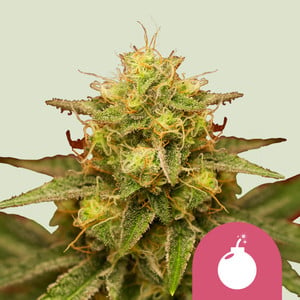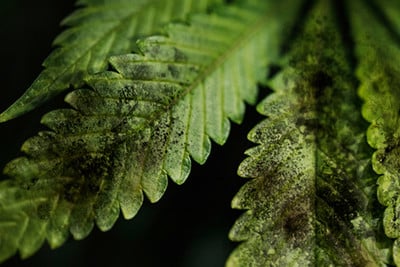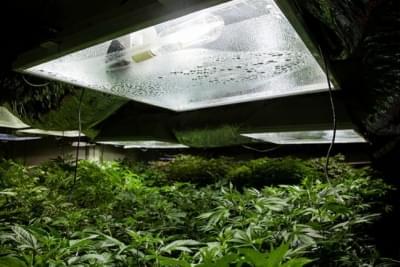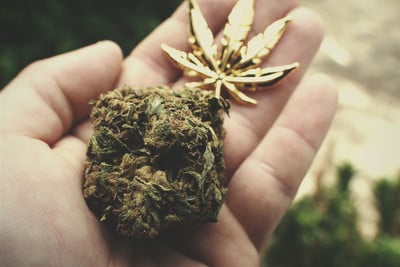.

All About Black Weed
Black cannabis does exist, and it doesn't necessarily mean something is wrong with your plants. Though it's unusual for a plant to take on an entirely black colouration, phenotypes do exist where purple can fade almost to true black.
People, on the whole, like rarities. We become desensitised to the "normal" and seek pleasure in the weird and wonderful. This is just as true for the color of cannabis. After all, which self-respecting cannabis enthusiasts wouldn't love to get their hands on some dark and mysterious weed?
Purple weed is reasonably well-known, but in this article, we will explore the possibility of black weed. It's not that common, but it does exist. So keep reading to find out more.
Contents:
The Many Colors of Cannabis
Generally, like most plants, cannabis is green—bright green, dark green, sometimes almost white, but usually always a hue of green. This is because cannabis is packed with chlorophyll, the green compound in plants, allowing them to photosynthesise. Greenness goes hand-in-hand with one of the plants' most fundamental functions. However, green isn't the only color at play. It turns out there's an entire rainbow of possibilities.
Everyone knows the song Purple Haze, and most of us have seen pictures of purple or even red weed. But have you ever seen black weed?
Though rare, black cannabis flowers do exist. Although technically speaking, they're not really black, but rather, they're mostly very dark shades of purple. You see, aside from chlorophyll, cannabis gets its colouration from compounds called anthocyanins. These organic molecules are thought to act as a sort of antifreeze, protecting the cell structure of plants that grow in colder environments.
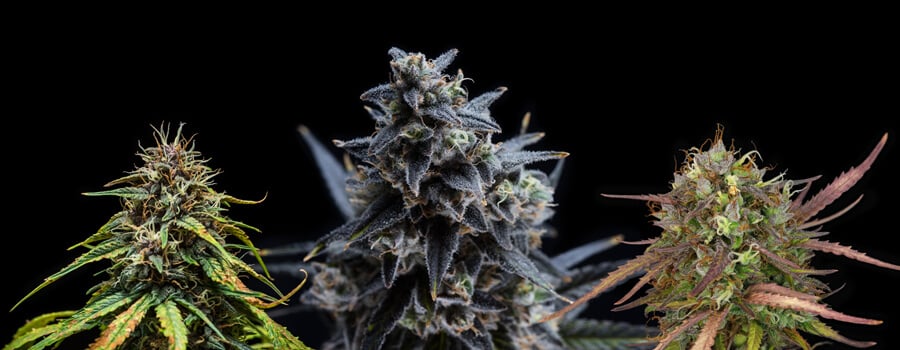
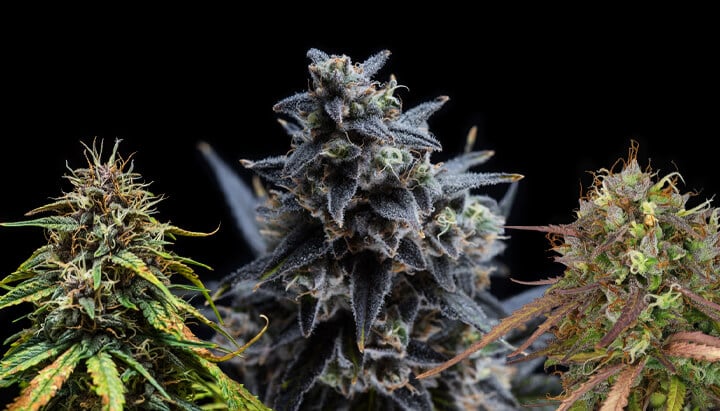
How to Grow Dark Cannabis
Growing plants with vibrant or broodingly colored buds is fascinating, and many of us would at least like part of our crop to exhibit varied colouration. But how do you do it? How do you grow black weed?
The main factor that contributes to bud colouration is a plant's genetics. If you want to grow black weed, you'll need to choose dark weed strains. Most plants, no matter how you raise them, will simply never turn black—or purple or red, for that matter. Still, certain strains have a genetic predisposition to change color under particular conditions—these are the ones you want to focus on.
However, it's often not enough to just choose a dark strain of weed. You also need to grow it in the correct environmental conditions. There are two main factors to consider:
- Temperature: This is thought to be the main factor in making cannabis express dark phenotypes. Cooler temperatures, especially during a plant's dark periods, can make it express its darker genes. Consider dropping nighttime temperatures to around 17°C.
- pH: Some growers also think that higher pH levels in the soil aid the production of anthocyanins. Whilst you should still endeavour to keep the soil pH in the optimum range (6.0–7.0), the higher end of this spectrum is thought to induce darker colouration in cannabis flowers.
Is Black Weed Stronger?
There's an assumption that cannabis plants with colorful leaves and flowers are considered especially potent and often have unusually psychedelic effects. The truth, however, is somewhat mixed.
It may be the case that cultivars with a propensity to develop into purple, red or black marijuana strains have exceptionally high levels of THC and certain terpenes which contribute to unusual and psychedelic-like effects, but that doesn't mean it has anything to do with the color.
Anthocyanins aren't psychoactive, nor are they known to interact with cannabinoids in any way. So unless we're missing some crucial knowledge, they shouldn't be able to influence your high. With that said, whether by chance or design, dark strains of weed do tend to have unusual highs, so it can still be a good indicator that you're onto something unique, even if the color isn't the exact cause.
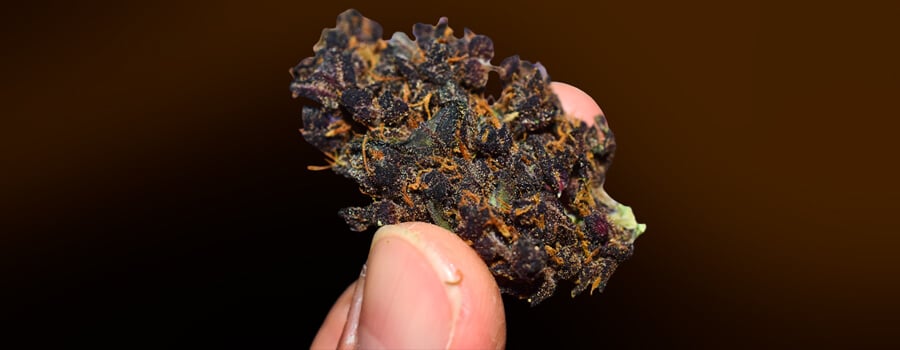
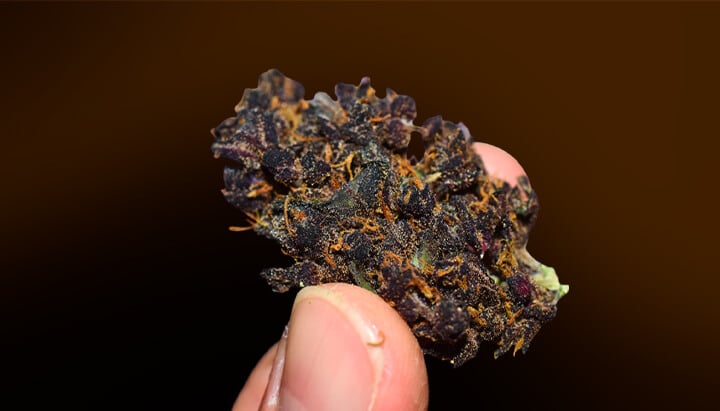
Does Sooty Mold Cause Black Weed?
If the leaves of your cannabis plants have turned black or have black patches on them, then before you assume you've grown some rare phenotype with unusual, dark colourings, you should rule out the possibility that it's infected with sooty mold—which sadly is not nearly as exciting.
To identify sooty mold, you're looking for a covering of black dust (or soot) on multiple leaves. Upon closer inspection, it's pretty evident that there is something on the leaf rather than the colouration coming from within.
Sooty mold is a secondary condition caused by sap-sucking insects, such as aphids, whiteflies, leafhoppers and mealybugs. These insects and the resultant sooty mold are actually quite common in organic gardens. But as long as the ecosystem is balanced, it shouldn't become a significant problem.
However, suppose there is a lack of natural predators (such as inside a grow tent). In that case, these insects can reproduce until you have an infestation, leading to an unhealthy covering of sooty mold.
How to Treat Sooty Mold
Fortunately, sooty mold is actually very easy to treat, as you can just wipe it off. Use a soft sponge with a solution of natural soap and water, and wipe away all the visible sooty mold. If you have an insect infestation, you'll need to use either a natural pesticide such as neem oil or introduce natural predators such as ladybugs to stop the sooty mold from returning.
Dark Weed Strains
There aren't many naturally black weed strains around, but they exist. And, even better, they tend to be very much worth growing and using, as they offer unusual highs while looking great in a grow room or cannabis garden. Here are three of our favorite black weed strains:
The Black
The Black is a classic Indica-dominant strain with a lineage that traces back to 1980s California. And, despite its somewhat mysterious origins, this lesser-known cultivar still deserves its place as a classic.
As it develops, it grows purple flowers, which can mature to almost black. However, don't expect to have entirely jet-black flowers. Rather, they're more likely to see buds ranging from green to purple with hints of darker peripheries.
In terms of effects, The Black is prized for its somnolent, Indica-led effects, which most people would only recommend using when you can really afford to wind down and crash. In short, this dark prince of cannabis is the perfect couch-lock strain.
Black Domina
Black Domina is another famous black cannabis strain. It was created in the Netherlands back in the 1990s, but remains very popular today. As with The Black, you shouldn't expect this plant to produce totally black flowers. Instead, expect a range of dark colourations, the darkest of which can veer into almost-blackness.
If you like strains with an impressive genetic lineage, Black Domina should be right up your street. It is the progeny of Northern Light, Afghani, Ortega, and Hash Plant. The latter two are lesser known, but Northern Light and Afghani are prolific strains that have lent their sought-after genetics to countless modern cultivars.
Black Domina, like The Black, is indica-dominant and causes a deep and powerful stone, best suited to relaxing and definitely not suitable for daytime smoking—unless you have absolutely nothing to do.
Royal Domina
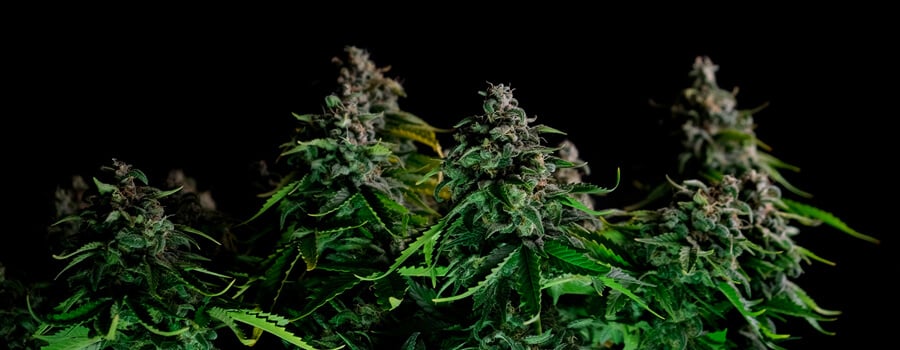
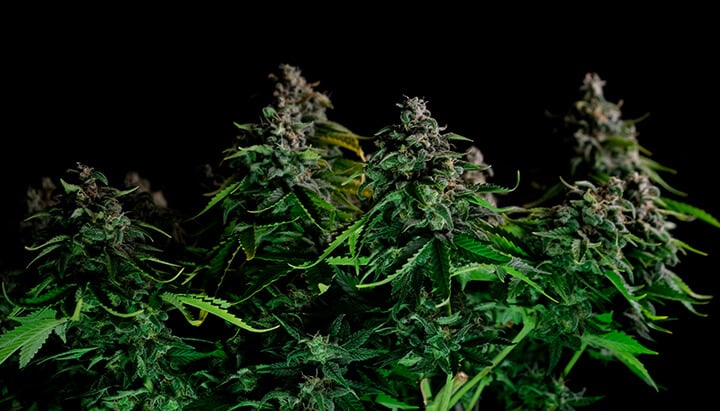
Royal Domina is our very own take on Black Domina—but we've added a few touches of our own, which we think make her very impressive in her own right.
To create this strain, RQS crossed Black Domina with Kalijah, bringing together two already genetically diverse strains into one truly eclectic cultivar. And, dark bud colouration aside, what you get when you come to smoke Royal Domina is something comfortingly familiar yet exciting and nuanced.
Expect an indica-style high that will lock you to the couch, perfect for deep relaxation of both body and mind. In terms of flavors, the classic genetics contained within this strain really stand out, and you can expect bursts of citrus, spice and earthiness, which suitably accompany the darkness of this strain's appearance.
Royal Domina
|
|
Black Domina x Kalijah |
|
|
18 to 20 oz/m² |
|
|
3 to 4 feet |
|
|
9 - 10 weeks |
|
|
THC: 20% |
|
|
Sativa 15% Indica 85% |
|
|
19 to 21 oz/plant |
|
|
5 to 6 feet |
|
|
Early October |
|
|
Calming, Stoned |
Purple Strains and Weed With Black Leaves
If you fancy trying out purple weed rather than black strains of cannabis, Purple Queen and Purplematic are the girls for you. Both strains can develop into gloriously colored plants and offer complex, relaxing highs. And don't forget, If you're after a colorful grow room, then the RQS seed catalog has plenty more to offer. Browse our complete selection to see which dark weed strains you can discover.
Black Cannabis: It's Yours for the Taking
Black weed is fairly unusual, but it's by no means inaccessible. Generally, strains with black or darker characteristics tend to be indica-dominant, and darkening leaves and buds are characteristics that develop in cold climates. Sativas, on the other hand, are more likely to be light green and vibrant—sometimes almost neon.
You should also bear in mind that growing colorful cannabis is something of a raffle. Strains genetically predisposed to change color won't always do so. Still, you can encourage them by keeping them cool and increasing soil pH. But temper your expectations; it's lucky to have flowers that take on intense colouration, so often, it's more of a visual treat than a guarantee.


























